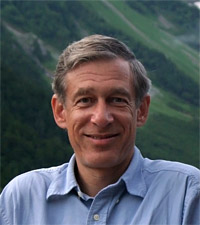Computational photography and the Stanford Frankencamera
 Marc Levoy, Stanford Graphics Group
Marc Levoy, Stanford Graphics Group
levoySeminar on People, Computers,
and Design
Stanford University November 6, 2009, 12:50pm, Gates B01
Computational photography refers broadly to sensing strategies and algorithmic techniques that enhance or extend the capabilities of digital photography. The output of these techniques is an ordinary photograph, but one that could not have been taken by a traditional camera. Representative techniques include high dynamic range imaging, flash-noflash imaging, coded aperture and coded exposure imaging, photography under structured illumination, multi-perspective and panoramic stitching, digital photomontage, all-focus imaging, and light field imaging.
Although interest in computational photography has been increasing, progress is hampered by the lack of a portable, programmable camera with enough image quality and computing power for everyday photography. To address this problem, the Stanford Computer Graphics Laboratory is building an open-source camera platform that runs Linux, is programmable at the microsecond time scale, and is connected to the Internet, and accommodates SLR lenses and SLR-quality sensors. Our current prototype is big and ugly - hence the name. Our immediate goal is to distribute this platform to computational photography researchers and courses worldwide. Our long-term goal is to spur the growth of an open-source camera community, leading eventually to commercial cameras that accept plugins and apps.
![]()
Marc Levoy is a Professor of Computer Science and Electrical Engineering at Stanford University. He received degrees in Architecture from Cornell University in 1976 and 1978 and a PhD in Computer Science from the University of North Carolina in 1989. His research interests include computer-assisted cartoon animation, volume rendering, 3D scanning, light field sensing and display, computational photography, and computational microscopy. At Stanford he teaches computer graphics, photography, and the science of art. He is a NSF Presidential Young Investigator, 1996 winner of the SIGGRAPH Achievement award, and a fellow of the ACM.).
![]()
The talks are open to the public. They are in the Gates Building, Room B01 in the basement. The nearest public parking is in the structure at Campus Drive and Roth Way.
View this talk on line at CS547 on Stanford OnLine.
Titles and abstracts for previous years are available by year and by speaker.